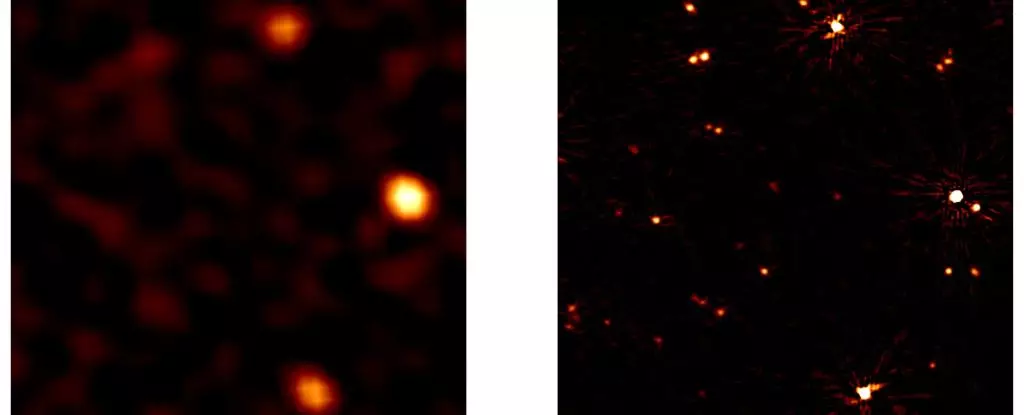In a groundbreaking discovery, a team of astronomers has successfully captured the very lowest frequencies of the radio Universe with unprecedented clarity. By utilizing a novel calibration technique, they have managed to obtain the first sharp images of the radio Universe in the frequency range of 16-30 megahertz. This remarkable achievement was deemed impossible in the past due to the turbulent interference caused by Earth’s ionosphere.
Astronomer Christian Groeneveld, from Leiden University in the Netherlands, spearheaded this revolutionary research. Describing the experience, he likened it to putting on glasses for the first time and seeing the world without blur. Exploring the Universe through radio waves poses unique challenges, especially at the lowest end of the electromagnetic spectrum. The radio range encompasses the longest waves, allowing them to penetrate Earth’s atmosphere. However, detecting these faint signals with long wavelengths requires large antennas.
While space-based radio telescopes are impractical for studying the radio sky, Earth-bound telescopes have been the primary tools for astronomers. The ionosphere, a layer of Earth’s atmosphere, scatters low-frequency radio waves, distorting the incoming signals. This interference has hampered detailed observations in the decameter frequency range, below 30 megahertz, until now.
In 2004, astronomers proposed that advancements in radio telescope arrays could enhance resolution. LOFAR, currently the world’s largest radio telescope, facilitates observations at the lowest frequencies achievable from Earth. To counteract the ionospheric distortion, Groeneveld and his team developed a calibration strategy akin to adaptive optics in optical telescopes. By using radio sources as calibration targets, they achieved significantly higher sensitivity and resolution.
Although the calibration technique has improved image quality, residual artifacts from ionospheric influence persist. However, the precision attained has unveiled unprecedented details in the radio Universe. By studying galaxy clusters and black hole emissions at low frequencies, astronomers can now gain insights into previously unexplored phenomena.
The team is diligently processing more data with the goal of mapping the entire decameter northern sky. Groeneveld remains optimistic, stating, “There is, of course, a chance that we will eventually discover something unexpected.” As radio astronomy continues to evolve, this breakthrough signifies a new era in our understanding of the Universe’s most elusive frequencies.


Leave a Reply